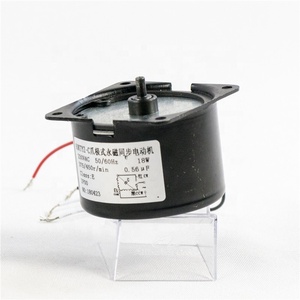Introduction to Electric Power Synchronizer
The electric power synchronizer is an essential piece of equipment in the field of power generation and distribution. It ensures that multiple power sources can operate in harmony, effectively matching their frequency, voltage, and phase for seamless integration into the grid. This device is critical in ensuring stability, efficiency, and reliability in power systems, particularly as renewable energy sources become more prevalent.
Types of Electric Power Synchronizers
There are several types of electric power synchronizers, each designed to meet specific operational needs:
- Manual Synchronizers: Require manual adjustments to synchronize generators, typically used in smaller operations.
- Automatic Synchronizers: Use advanced control systems to automatically adjust parameters, ideal for large-scale facilities.
- Digital Synchronizers: Incorporate the latest technology to provide real-time monitoring and adjustments for enhanced precision and control.
- Hybrid Synchronizers: Combine manual and automatic features, offering flexibility and reliability for diverse applications.
Applications of Electric Power Synchronizer
The applications of the electric power synchronizer are vast and varied, catering to multiple sectors:
- Power Plants: Integral in synchronous operation of multiple generators, ensuring stability in power output.
- Microgrid Systems: Facilitates the integration of renewable resources, like solar and wind, with traditional power sources.
- Industrial Facilities: Used in large manufacturing plants where backup power is essential to maintain operations during outages.
- Marine Applications: Ensures seamless power management aboard ships and offshore installations, where multiple generators operate simultaneously.
Features and Advantages of Electric Power Synchronizers
Investing in an electric power synchronizer comes with numerous advantages due to its remarkable features:
- Precision: Advanced algorithms ensure accurate synchronization, reducing the risk of electrical surges and equipment damage.
- Reliability: Enhances the overall reliability of power systems, minimizing downtime due to malfunctions.
- Real-time Monitoring: Digital models provide real-time data, enabling operators to make informed decisions and adjust operations swiftly.
- Cost-effective: Reduces operational costs by optimizing fuel consumption and improving efficiency across generators.
- Improved Safety: Mitigates the risks associated with power outages or equipment failure by ensuring continuous load balancing.
How to Choose an Electric Power Synchronizer
Selecting the right electric power synchronizer involves careful consideration of various factors:
- System Requirements: Assess your existing power systems' specifications to ensure compatibility with a synchronizer.
- Type of Operation: Determine if manual, automatic, or digital synchronizers better suit your operational needs.
- Scalability: Choose a synchronizer that can scale as your power demands increase or change.
- Budget: Consider both the initial investment and long-term savings when selecting a synchronizer model that fits your financial plan.
- Technical Support: Opt for manufacturers that offer robust support and maintenance services for their products.
















































































































































































